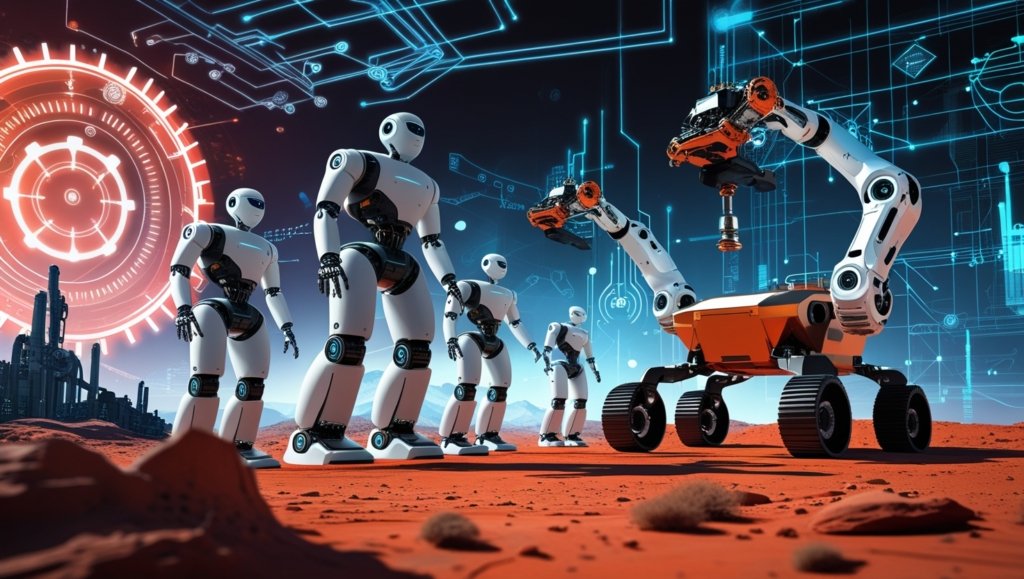Robotic technology has revolutionized how humans interact with machines, making groundbreaking strides across industries like manufacturing, healthcare, space exploration, and everyday life. The journey of robotics spans centuries, rooted in ancient ingenuity and propelled by modern innovation.
What Is Robotic Technology?
Robotic technology refers to the design, construction, and operation of robots—mechanical devices capable of performing tasks autonomously or semi-autonomously. Modern robotics combines artificial intelligence (AI), mechanical engineering, electronics, and computer science to create machines that mimic or enhance human capabilities.
Robots are employed in various fields, from assembly lines to performing complex surgeries and exploring distant planets. As technology evolves, robotics plays a crucial role in making human life more efficient, safe, and innovative.
Historical Roots of Robotics
The concept of automated machines dates back thousands of years. Ancient civilizations, including Egypt, Greece, and China, laid the groundwork for robotic technology by developing mechanical devices for entertainment and practical purposes. Notable early developments include:
- 300 BC: Greek engineer Ctesibius of Alexandria created water clocks and mechanical birds.
- 1495: Leonardo da Vinci sketched plans for a humanoid robot resembling a knight, capable of movement through pulleys and gears.
These early designs showcased humanity’s desire to create machines that mimic human actions, though practical robotics was still centuries away.
The Founders of Modern Robotics
While many contributed to the field of robotics, several key pioneers laid the foundation for its modern era:
- Karel Čapek (1890–1938)
The Czech writer coined the term “robot” in his 1920 play R.U.R. (Rossum’s Universal Robots). Derived from the Czech word “robota,” meaning forced labor, it introduced the idea of synthetic beings created to serve humans. - Isaac Asimov (1920–1992)
Asimov, a science fiction writer, popularized robotics in his works. His “Three Laws of Robotics,” introduced in 1942, influenced ethical considerations in robot design. - George Devol (1912–2011)
An American inventor, Devol created the first industrial robot, Unimate, in 1954. This robot revolutionized manufacturing by automating repetitive tasks on assembly lines. - Joseph Engelberger (1925–2015)
Often called the “Father of Robotics,” Engelberger partnered with Devol to commercialize Unimate. His work laid the foundation for modern industrial robotics.
Advancements in Robotic Technology
Since the mid-20th century, robotics has evolved dramatically:
- Industrial Automation: Robots perform precision tasks like welding, assembling, and packaging.
- Healthcare: Surgical robots, prosthetics, and exoskeletons enhance medical care.
- Space Exploration: Rovers like Mars Curiosity explore planets, sending invaluable data back to Earth.
- Everyday Life: Robotic vacuum cleaners, personal assistants like Alexa, and drones are part of our daily routines.
The Future of Robotics
Robotics continues to expand into areas like AI integration, autonomous vehicles, and human-robot collaboration. Emerging trends include:
- Soft Robotics: Flexible robots that mimic natural movement for delicate tasks.
- AI and Machine Learning: Smarter robots capable of decision-making and learning from experience.
- Humanoid Robots: Robots with human-like appearance and behavior, bridging the gap between humans and machines.
Conclusion
The history of robotics reflects humanity’s quest to innovate and improve. From ancient automata to cutting-edge AI-powered machines, robotic technology continues to redefine possibilities. While no single individual can claim to be the sole founder of robotics, pioneers like Karel Čapek, George Devol, and Joseph Engelberger played pivotal roles in shaping this transformative field.
The future of robotics is boundless, promising a world where humans and robots coexist, collaborating to solve challenges and create new opportunities.


